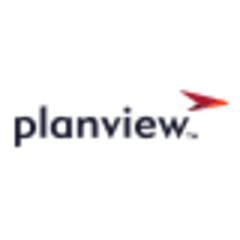The biggest thing that I'm trying to hunt down is the integration with Projectplace possibilities with other tools such as with our development team that is using JIRA. Our information systems and services teams use it for planning project work, analysis, detailing, time tracking, and estimates. They haven't started the story point yet but we'll probably end up doing that. We do use the Kanban features of this to walk through our standup. And our PMs use the portfolios. Our managers, VPs, and directors use the portfolio to look at the overall work of how it's planned, and so forth. Those are mainly our use cases today.
Projectplace's ability to connect to Gantt charts and Kanban boards affects the ability of stakeholders to view progress. It shows the duration and visually if you look at the plan and see where you're at, based on today, and showing you progress, it has little visual cues if you're behind and so forth. From a Kanban board, they can come in and look and see what's still planned or if people ARE still working on something. Once we get there, they'll be able to see the story points. I don't see that JIRA would provide a velocity report, but I'm sure there's something in there that you can look at to see what was estimated and how much work you're getting done within a board.
We have less than 500 users.
To me, it's all about collaboration and that's helped tremendously. I know from upper management that ogging time and trying to see what works, opening the eyes of even the VP as far as how many hours have been logged for certain projects and support items has come very handy. They didn't realize that's how much time it took to support certain features of our organization. That was a huge success to see that and was an easy adoption. It's really key. Most people on our teams have taken to it.
Projectplace tracks work details in completion milestones. We do use the milestones for tracking and planning. It's really visual and it's easy to link from pre-inceptions, inceptions, iterations, collaborations that release and turnover, and so forth. That's been awesome. I've been trying to help the PMs out as much as possible for new people coming on board with how to adapt to that and be able to move those around. It's very similar to Microsoft Project, but I think if people have not been in Project before, it's easy to adapt.
Projectplace is very similar to Microsoft. I've only skimmed Microsoft Project somewhat just because I'm not a PM, but the PMO team enjoys this piece of it. It has the visuals, it's very similar. I don't want to say it's exact, obviously, but it's very similar where it's got the Gantt and visuals, you can add milestones, you can easily adjust those milestones and the targets, and you can pull and visually move things around. Going from a task or from milestone to milestone has been great. I'm sure there's more to Projectplace than I've seen.
The workspace ease, navigation, and portfolios are the most valuable aspects of this solution. I just got access to the portfolios from my upper management, so I'm able to look at our specific SRE portfolio to see what's a priority, look at how many hours we've tracked, and things like that. I'm not so much included in the budgeting but it's important to see what projects are higher priority and so forth.
With the portfolio view, I knew everything when we expanded out, showing the authority and statuses. Then inside the actual workspaces, looking at the analysis itself and linking those milestones in the analysis workspace is great because a lot of PMs need that for the plan. It's easy to navigate and easy to move. I loved JIRA as well but it doesn't give you that robust visual. I think it's a little confusing sometimes when you first start up with JIRA. But Projectplace was a snap for me.
It was great to get in there and really see how things move along and so forth. One of the integrations that we are using from JIRA, is the email piece of it. It's great that they can send it to an email board and create the card. That's awesome. Unfortunately, it's not bidirectional. You can respond to that email, but it's not usually that user's email that it's going back to because we're on the cloud over in JIRA as well. We're looking into some other options for integration.
We've created templates mainly for plan-build-run. We tried to make it as simple as possible. I personally want to build that out a little bit more, from an Agile perspective. Our company is still adapting Agile as well. We have Waterfall and Agile right now. From an Agile perspective, we want to build out templates with milestones for pre-inceptions, inceptions, iterations, and then left shifts for turnover, once it gets released, and so forth. We want to see what the cases are and what we want to accomplish then break that down. I love that you can import a work breakdown structure as well. I don't know if this company does it, but that's something I've done in the past. Being able to import is great.
Then we would just plug away and try to create cards in the workspace, forecasts that need to be done, and so forth. That's where that integration may come in from and ask with our research and development teams, being able to reach out to our team, engaging us from whatever they may need, finding out SLOs, and things like that. Then, of course, the repository, the documentation repository is great, it works fine. So far its ability to work with detailed implementation plans for projects has been great.
We use the Kanban boards to collaborate and that's been a great visual inside the workspaces. I think showing your meetings has been a win-win. At first, people had a hard time looking at those boards because they're creating a card. They're trying to create a board and we tell them not to. It's easy to hit the plus sign, add a card, move cards from "Plan" to "Working on" to "Done." If you're looking at milestones as Sprints, you would want to have a separate board, so to speak, that's a backlog board that could be used, and try to visualize that and do Agile methods like Grooming and so forth. It's been good.
From a scale of one to 10, the overall visibility into project status provided by Projectplace is definitely a 10. I think it covers a lot. You can adjust by breaking it down visually and they have all the different methods, looking at it from weeks, months, quarters or whatever it may be. You can easily add milestones and look at it that way. The portfolio's important. I just got access to that, so I'm still learning that piece of it, but I think looking at the overall time and so forth, and I think some of my upper management love to export it and look at it from how much work is being done. They can email that or there's a shared link that they email upstream to see how much we're adapting and so forth.
I know they are tracking resources across multiple projects. I know that my management has talked about how many hours are spent on a specific project and so forth, but I'm sure the members themselves are tracking it.
This dynamically updates schedules as progress is made. Without real-time updates, once somebody puts in an estimate or tracking their time if that wasn't real-time, that would be tough to dynamically look at that overall project and see how much progress. If they don't move their cards, and it keeps track of where those go, that would be a problem.
When I export or print, there should be a way to print the descriptions with that model, milestones, and there might be, I just don't know what that is. When you download the PDF, it only shows the actual name of the milestones and not the small descriptions that go along with them.
The time reporting is an excellent feature that they can show from an individual. The only problem I see is the description field. You can't increase that field, like to pull the column and widen the column that I've seen. I'm not seeing anywhere you could do that. Because you may have some of these cards that start with the same name and you only have so much real estate. There should be a way to adjust those columns somewhat so you can look at the description or hover over it and it tells you what the description is.
I've been using Projectplace for the last three to four months.
Stability has been great. We haven't had any problems with it. There has not been any downtime that I'm aware of, especially with the cloud version.
We plan to bring on more teams and members.
I find Projectplace to be scalable.
I usually just Google online or going to their site. I think their site's very robust, explains a lot, and you can track all the sessions that you've taken and so forth. But from a technical perspective, we're just beginning the integration discussion. They've been good so far.
I wasn't part of the initial setup but I think it was straightforward. I think they moved pretty fast.
The network team does the deployment and maintenance. There's an overall tools team from a corporate level but some are smaller divisions.
For deployment and maintenance there are only three of us.
I think we have seen ROI only because they're able to track the work and see how much work is being put into it and then determine resources and so forth, so that's really a key factor.
We've been talking to our account manager, he's helping us along. We're trying to figure out what's best for us and what may help us in the long run. We're looking at LeanKit, we know that there's a strong and robust integration there. But we just started our members on Projectplace, so we don't want to really switch tools yet.
You definitely have to have a plan. The templates are great to start out with, being able to build those workspaces fast, and then jumping in. It's very intuitive, sometimes when you're trying to learn other products, like JIRA, sometimes it's a little more confusing and it's hard to get that concept of what an issue type is and trying to understand how they integrate. Then, of course, they have a portfolio too, which makes it a little bit easier to view, but I think it's been great.
I would rate Projectplace a nine out of ten. Not a ten because there is room for improvement with integration.












